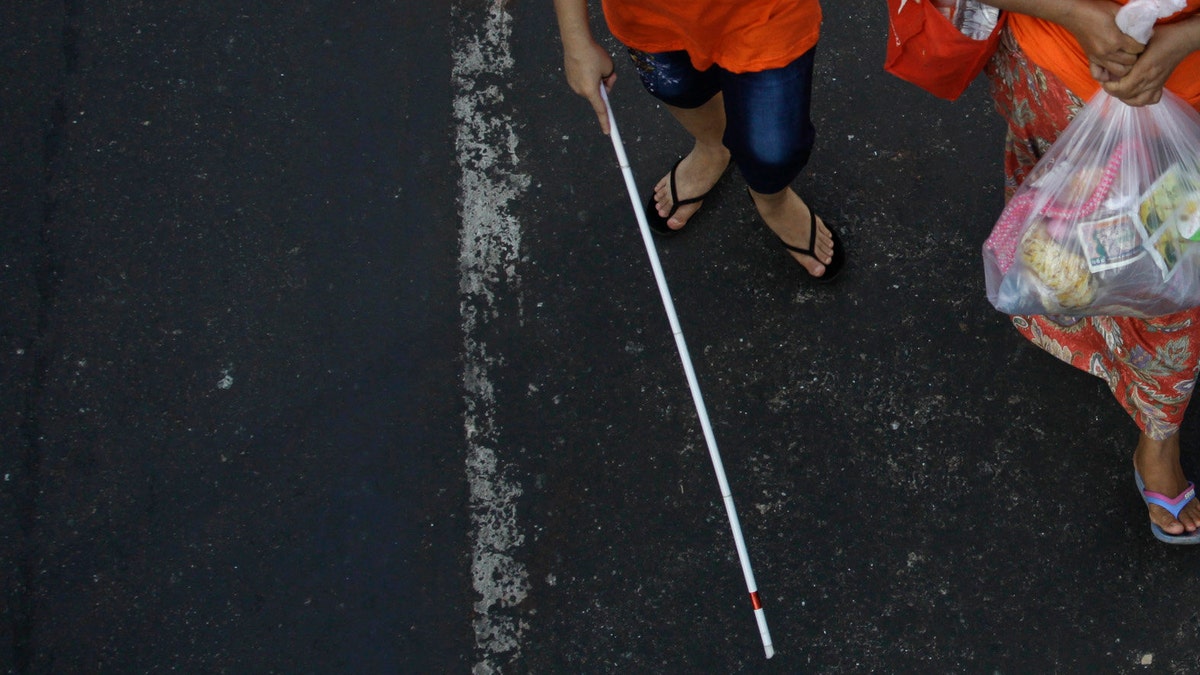
File photo. (REUTERS/Soe Zeya Tun)
Equipped with a new “smart” cane, Americans who have lost their sight will now again be able to immediately recognize their family and friends.
Students at Birmingham City University in England focused their talents on creating a next generation cane for the visually impaired.
Fittingly dubbed XploR, the cane leverages smartphone technology to help the user detect and recognize familiar faces up to more than 30 feet away. The cane is also souped up with GPS to help the user navigate.
About 285 million people worldwide are estimated to be visually impaired, according to the World Health Organization.
Students Steve Adigbo, Waheed Rafiq, and Richard Howlett worked with the Beacon Centre for the Blind to figure out how they could make their revolutionary cane the most helpful for the visually impaired. Through their research, they learned it was important for the cane to not just be easy to use but also lightweight.
For Adigbo, this mission has been personal. It’s about family.
"My grandfather is blind and I know how useful this device could be for him. The smart cane incorporates facial recognition technology to alert the user when they are approaching a relative or friend. There's nothing else out there like this at the moment,” he explained in the university’s press release.
How does it work?
First, you put the images of people, like friends, family, work colleagues – or even someone well-known like the President — into an image bank. The image bank is stored on an internal SD memory card.
When the cane is in use, the smartphone tech “recognizes” faces for you. It does this by scanning faces it encounters and when it detects a face in your image bank, then it vibrates to let you know it has recognized someone.
With the cane, the user wears an earpiece. The cane relays data to the earpiece using Bluetooth technology. Once the smart cane identifies someone, it can then guide a user towards the person using the earpiece through audio guidance.
Advances in white canes
Other similar technology like UltraCane and SmartCane makes canes smart by recognizing obstacles for users.
These devices modernize the white cane — the standard cane used by many people who are blind or visually impaired — to help users identify obstacles in their path to avoid collisions.
SmartCane, for example, attaches to the top of a standard white cane and the inbuilt sensors detect obstacles up to 10 feet away. It can warn users of a range of potential collision threats like a branch in the air or a bicycle on the sidewalk.
This tech sort of gives users bat-like abilities to navigate the environment. Bats use sonar sending out ultrasound waves to identify objects in their path. The SmartCane tech similarly emits ultrasound waves. When the waves return to the cane, the relevant side of the cane vibrates to warn of an obstruction ahead.
Where can you find one for a loved one?
The XploR project was part of the European initiative LILA that encourages entrepreneurship and internationalization. The Birmingham City University student team has been working hard to raise awareness about their XploR cane design and ultimately make it available to as many people as possible. They hope that their cane will become widely available soon.
SmartCane and UltraCane are currently available on the market.
